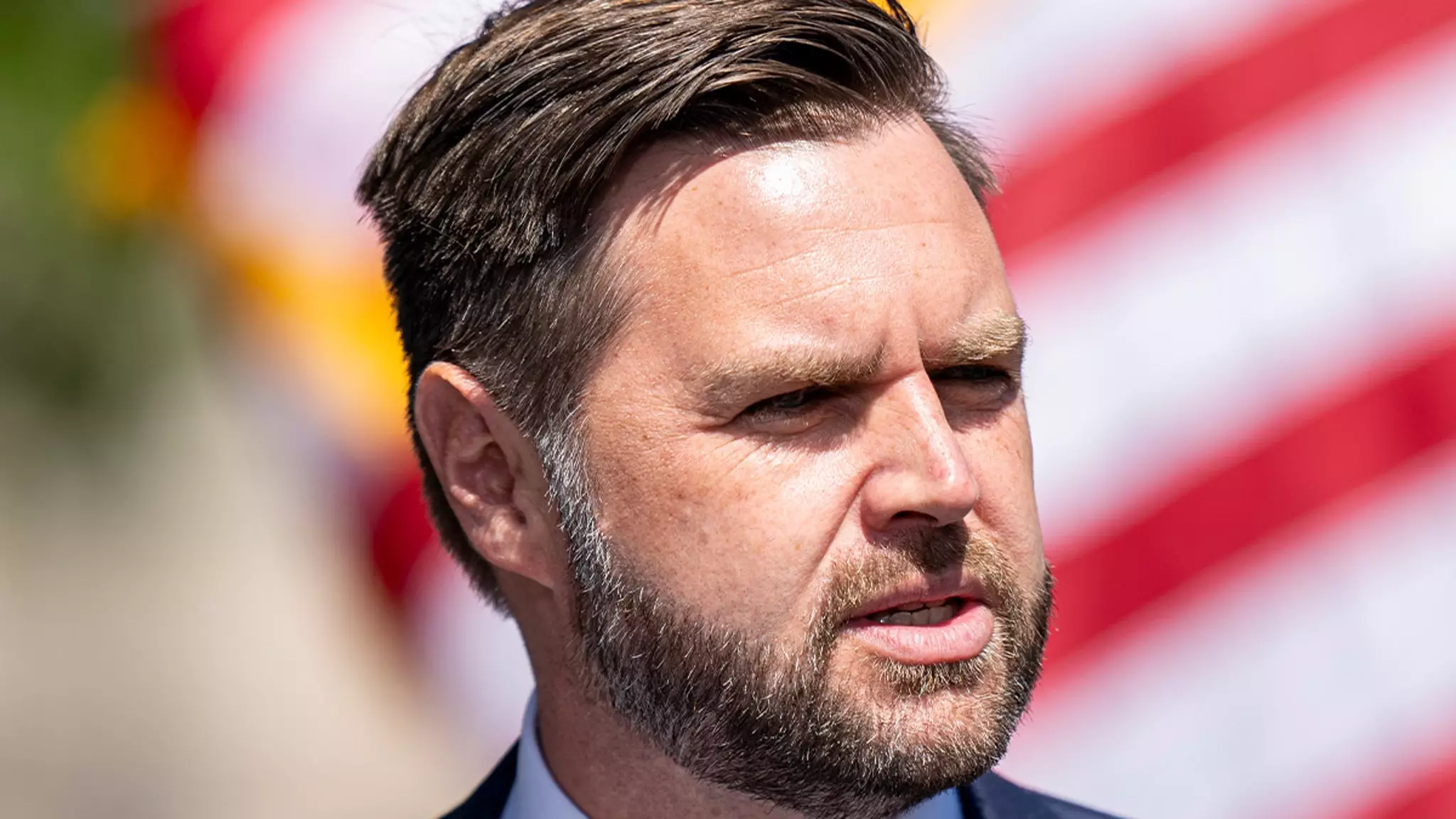J.D. Vance’s recent appearance at the Kennedy Center was anything but tranquil. As he settled into his seat alongside his wife, Usha, a resounding chorus of boos erupted from the audience. This reception was not just a random act of discontent; it was a direct response to an environment steeped in divisive politics, ignited further by Donald Trump’s unexpected claim to leadership at the venerable institution. The evening’s atmosphere morphed from anticipation of a live orchestra to a theater of disdain, highlighting a deeper societal rift where public figures navigate treacherous waters.
The audience’s palpable hostility culminated in cries for Vance’s exit, as someone audaciously shouted, “Kill that light!”—a metaphorical plea to dim both his presence and the discord he represents. Yet, Vance remained unfazed, sipping his drink and flashing a grin, embodying the tenacity of a politician thrust into the eye of public disdain. This moment encapsulates a critical dichotomy in American politics—while some remain steadfast in their ideologies, the backlash they face serves as a stark reminder of the societal consequences of high-profile political moves.
Trump’s Power Play: The Cultural Tug-of-War
Trump’s ascension as the chair of the Kennedy Center’s board exemplifies a bold attempt to mold cultural institutions to align with personal beliefs. His motivation to steer the programming away from what he terms “woke” initiatives reflects a conservative backlash against the evolving norms of entertainment and cultural representation. The dismissal of established figures, including the strong presence of board members appointed during the Biden administration, speaks to a broader movement towards consolidating power within specific ideological circles.
This appointment sent ripples through the entertainment community, provoking notable figures to respond in kind. The cancellation of Issa Rae’s event and the anticipated withdrawal of “Hamilton” from future performances are signs of artists actively resisting the cultural overhaul being imposed. These acts underscore a struggle for artistic autonomy against a backdrop of increasing politicization of the arts, where what was once viewed as a neutral ground has transformed into a battlefield of cultural identity.
Artists vs. Authority: The Broader Implications
The response from artists not only indicates dissent but also reflects the growing recognition among creatives of their role as cultural custodians. In a time when art is seen as a reflection of society, the alignment with political figures can undermine the integrity and authenticity that many believe should govern artistic expression. The resignation of prominent voices from the Kennedy Center Board further raises questions about the implications of political affiliations on cultural institutions traditionally revered for their independence.
Vance’s encounter at the Kennedy Center is emblematic of a larger political phenomenon—where the personal and political intersect, often in dramatic fashion. As America navigates this turbulent phase of cultural identity, the actions of both Vance and Trump reveal a landscape where art, politics, and public opinion are interwoven, still fraught with the potential for greater discontent. The artistic community’s resistance to being co-opted by political agendas is a stand that merits not only attention but respect, as it seeks to uphold the core values of diversity and inclusivity that many fear are at risk of being lost.

